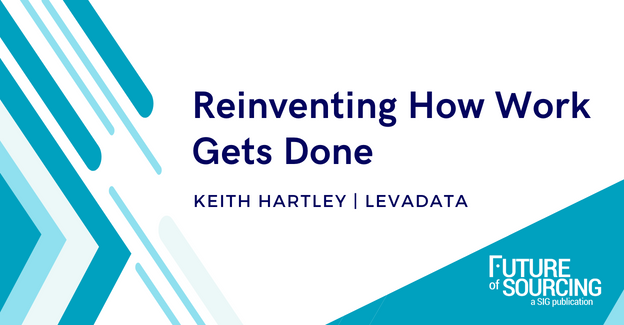On January 18, Microsoft CEO Satya Nadella shared a communication with Microsoft employees that typifies emails being sent by other CEOs across the tech industry right now:
“. . . we saw customers accelerate their digital spend during the pandemic, we’re now seeing them optimize their digital spend to do more with less.”
He acknowledges the impending recession in many parts of the world and provides a glimpse into what that means for Microsoft:
“. . . the next major wave of computing is being born with advances in AI, as we’re turning the world’s most advanced models into a new computing platform.”
Together, Google, Amazon, and Microsoft have laid off over 70,000 workers. Experts believe that layoffs will spread to other industries as a recession looms.
What does this mean for workers left to do the work? Inevitably, it means they’ll need to do more with less. And as Nadella hints, some of the work might be supported by AI.
What does this mean for supply chain and procurement?
As it turns out, doing more with less might be better stated as reimagining how work gets done. First, AI technologies won’t replace people in supply chain and procurement roles. Instead, AI and automation technologies will take care of the tedious tasks that teams don’t enjoy doing. Second, these new tools help make procurement professionals’ jobs more important to the organization. As companies aggregate more and more data, having an AI-powered platform that contextualizes this information and delivers actionable insights is invaluable. Procurement teams that engage early in the design phases of projects are already identifying supplier and component risks that reduce redesign costs and potential product launch delays. In fact, according to a Kearney study, early procurement collaboration with a product development team reduces the product costs by up to 20 percent.
Now, armed with AI and automation tools, procurement teams can make faster, better-informed decisions that add millions of dollars to the top and bottom lines of the organization. That means that procurement can become a bigger part of creating and driving strategy for the organization.
Here’s the scenario: AI dynamically aggregates and contextualizes massive amounts of data in real time, helping companies gain better visibility into supply continuity, costs, risks, supplier health, and more. Procurement, of course, uses these tools to understand how each part can impact an organization’s financials. Commodity managers use AI to intelligently optimize costs in supplier negotiations. Teams receive real-time alerts of risk exposure to commodity parts and materials before a disruption occurs. Engineering and product teams assess supplier health and use AI tools to model how key components affect product costs.
Going from “More with Less” to “Transform or Perish”
If organizations think they can pile more work on a pared-down workforce while a recession looms, they might want to look to the recent past. Over the past few years, employees quit their jobs in record numbers. According to a Pew Research Center survey, 63 percent of workers surveyed quit a job in 2021 due to no opportunities for advancement. Fifty-seven percent quit because they felt disrespected at work. Thirty-nine percent quit because they were working too many hours. So, career and work–life balance opportunities make a difference in retaining employees. AI-powered platforms can help with all of these issues.
Looking at the culmination of a looming recession with widespread layoffs and the need to retain an engaged workforce, digital transformation is no longer a “nice to have.” There is no doubt that there will be new supply chain shocks—it’s just a matter of when. That’s why there is no better time for procurement professionals to lead the charge and transform how sourcing is done across their organization.
Companies must reinvent their current workflows and replace spreadsheets and manual processes with AI platforms to survive. Period. If they don’t, they’ll lose business to competitors. We’ll see the data divide continue to grow between companies that harness AI platforms and the dynamic insights they provide and those that don’t. Those that have them will quickly enjoy millions of dollars in cost savings, act rapidly on insights to avoid risks, increase their speed to market, and generate higher productivity and new career opportunities for their teams.
One of the biggest opportunities for transformation is direct material sourcing, which continues to rely on highly manual processes that are broken. Many teams still use spreadsheets to negotiate with suppliers. Companies cannot afford to delay using platforms that help them turn insights into action much longer as competitors gain traction with these tools. Having data visibility across your enterprise and the ecosystem of external data is critical to getting the best price from the best supplier while maintaining supply continuity.
Final Thoughts
In the 1990s, key office technologies included “landline” telephones and fax machines. When personal computers became popular and the Internet exploded, forward-looking organizations invested in these new digital technologies and gained incredible economies of scale. AI and automation platforms represent this scale of sea change. Procurement teams will either transform from manually poring over spreadsheets to building and executing strategies with AI and automation tools or their companies will cease to exist. Which option will you choose?









